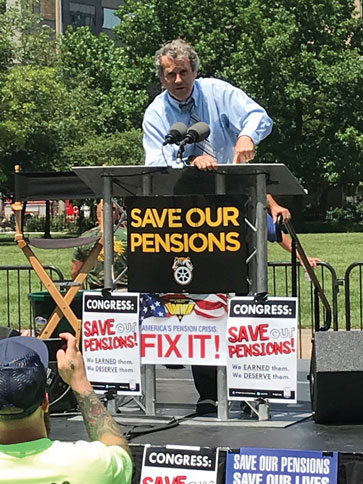On December 30, 2019, the American Federation of Musicians and Employers’ Pension Fund (AFM-EPF) submitted an application to the U.S. Treasury Department to reduce benefits under the Multiemployer Pension Reform Act (MPRA) in order to prevent the Plan from becoming insolvent. “We know that our participants have anticipated this difficult moment for some time. Now that the application has been completed and submitted, we can provide important information about how each participant would be affected by the proposed benefit reductions if the application is approved by Treasury,” according to a statement from the Fund trustees posted on www.afm-epf.org.
On January 6, the Fund office mailed a packet of information about the MPRA application to all participants and beneficiaries of deceased participants. This mailing includes three documents, all of which are important for participants to read in full:
• Personal Benefit Estimate Statement ― Personalized statement showing participant’s estimated benefit as of January 1, 2021 should the reduction be approved and go into effect.
• Difficult Choices Newsletter ― Overview of what’s happening and why.
• Official Notice of Proposed Reduction ― Official notice of the Plan’s application to reduce benefits, including important information about participant rights.
In addition to the copies that participants will receive via U.S. mail, the Difficult Choices newsletter and Official Notice of Proposed Reduction are available now on the Recent Mailings page of the Plan website, under the “Stay Informed” tab.
Participants who have registered on the Plan website can access their Personal Benefit Estimate Statement by logging into the Participant Portal at www.afm-epf.org and clicking on the MPRA Benefit Estimates icon. Participants who have not yet registered may do so by clicking on the link in the heading of the plan website.
The AFM-EPF will continue to keep participants informed throughout the MPRA process via the Pension Fund Notes e-newsletter. It will also maintain resources on the Plan website, including the Frequently Asked Questions page and the MPRA Benefit Reductions page, which contains a description of each component of the proposed benefit reduction.







